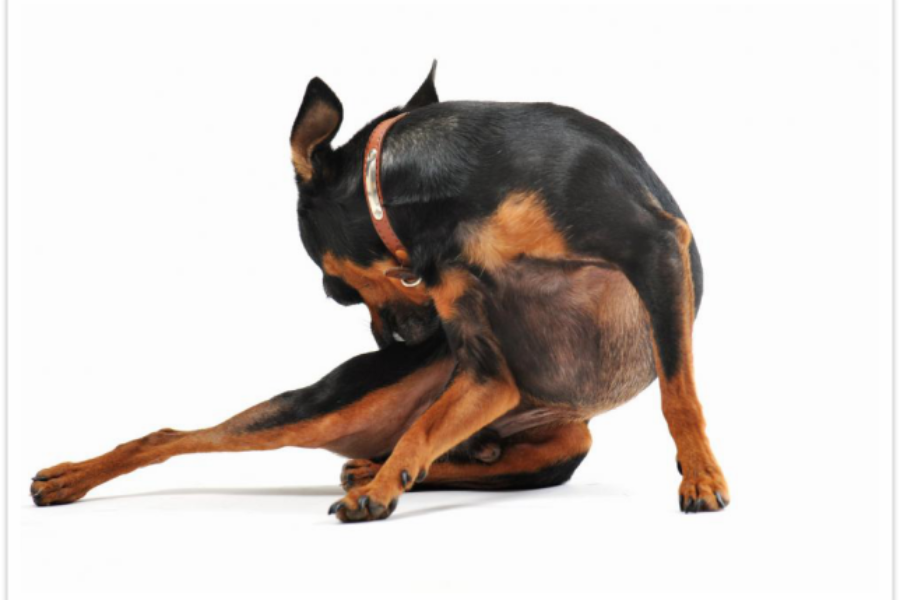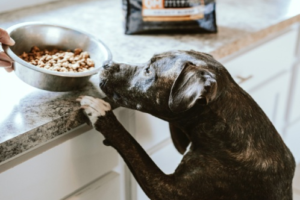If you are a dog owner, then it is extremely important that you are well-informed about ehrlichiosis. Simply put, ehrlichiosis is a tick-borne disease that is becoming increasingly common among dogs across the US. It develops after an acute infection that starts with appetite loss and fever. The worst part is that the symptoms don’t appear right away. They may become noticeable in two or four weeks after experiencing the bite of an infected tick.
Common Forms of Ehrlichiosis in Dogs
The two most common forms of ehrlichiosis in dogs are:
Canine Monocytic Ehrlichiosis
Also known as CME, canine monocytic ehrlichiosis develops after the dog has been infected by the ehrlichia canis bacteria. It is predominately transmitted to dogs through the bite of rhipicephalus sanguineus – brown dog ticks that are more common in states with warmer climates.
Once the dog is bitten by the tick carrying ehrlichia canis bacteria, they may appear normal for two weeks. However, if the dog is unable to combat the infection during this time, it will enter the acute phase of this infection.
At this stage, the bacteria are reproducing actively inside the white blood cells and gradually spreading throughout the dog’s body. After three weeks, the dog may begin to display symptoms of canine monocytic ehrlichiosis. Although poor appetite and fever are common symptoms, they may be followed by other symptoms like:
- Lethargy
- Enlargement of the lymph node
- Abnormal bleeding and bruising
- Chronic eye inflammation
- Lameness occasionally
- Neurologic abnormalities
This stage can last for four weeks. Some dogs may overcome this stage without any treatment, while others may pass into the sub-clinical stage. This stage is considered the worst phase typically because of no clinical signs. The only way to detect the infection is by taking a blood sample. The sample may also reveal a low platelet count in the dog, indicating the presence of an infection.
Some dogs may never progress out of the subclinical phase, but others may move to the next stage, which is the chronic phase. The chronic phase is also known as clinical ehrlichiosis. At this stage, the immune system of the affected dog weakens and fails to eliminate the organism. The symptoms of the infection are clearly visible at this stage, such as:
- Eye problems
- Bleeding episodes
- Lameness
- Swollen limbs
- Neurological problems
- Anemia
Also, if the bone marrow fails to produce blood, the dog may eventually die.
1. Canine Granulocytic Ehrlichiosis
This is the second type of ehrlichiosis. It is caused by ehrlichia ewingii bacteria transmitted through the bite of amblyomma americanum. These are lone star ticks primarily found in southeastern, midwestern and eastern parts of the US.
Some common telltale signs of this infection include:
- Fever
- Lethargy
- Vomiting
- Lameness
- Neurologic abnormalities
- Diarrhea
What you need to do if you suspect that your dog has been infected with ehrlichiosis
Regardless of whichever type of ehrlichiosis your dog has, make sure that you take your pet to a veterinarian for complete evaluation and diagnosis. Sometimes, diagnosing the symptoms of ehrlichiosis can be difficult because they are similar to other diseases, such as Rocky Mountain spotted fever, Lyme disease and immune and lymphosarcoma.
However, an experienced vet will perform certain tests in order to determine the underlying cause of the problem. For ehrlichiosis, the vet may take the following steps:
- Collect the complete health history of your dog
- Examine the dog physically
- Perform a CBC test
- Carry out urinalysis, fecal examination and other specific lab work
Once your dog is diagnosed with ehrlichiosis, the veterinarian may prescribe antibiotics doxycycline. This antibiotic is given once daily for 3 to 4 weeks, along with other medication, if necessary.
If your dog receives proper care and treatment in time, it dog may recover rapidly within a day or two. However, if the case is severe, then additional treatment may be required, such as intravenous fluids, immunosuppressive medication, blood transfusions and pain relievers.
Best ways to minimize the risk of ehrlichiosis
It’s said that prevention is cure and we couldn’t agree more. Some of the best ways to minimize the risk of ehrlichiosis in pet dogs is to check them daily by running your hand across all areas of their skin. Don’t forget to check the most vulnerable and hidden areas, such as leg joints, ears and between the toes. And make sure to use tick repellents. Use a repellent that is suited to your needs and your pet.
Apart from this, keep your garden tidy. Many dogs like to spend at least a bit of their time in the garden daily, making it one of the most common places to come in contact with ticks. Although planning an entire landscaping project around tick prevention is great, simpler measures can be clearing invasive weeds, lawn mowing frequently, and cutting tall grasses.
Another great way to minimize the risk of ehrlichiosis in dogs is to invest in pet grooming services. More than a luxury, pet grooming is super essential to keeping your pets happy, healthy and clean. Services like flea and medicated treatment can help keep your dogs clean and free from flea and ticks.
At Twissted Whiskers Pet Hotel, we offer high quality and affordable pet grooming services by a team of experienced experts. We provide a wide range of specialty services to make sure that your pet dog remains clean, healthy and free from ticks.
We also offer other specialized services which include dog boarding and daycare. For more information about our services or to schedule an appointment, call us at (678) 714-5477.





